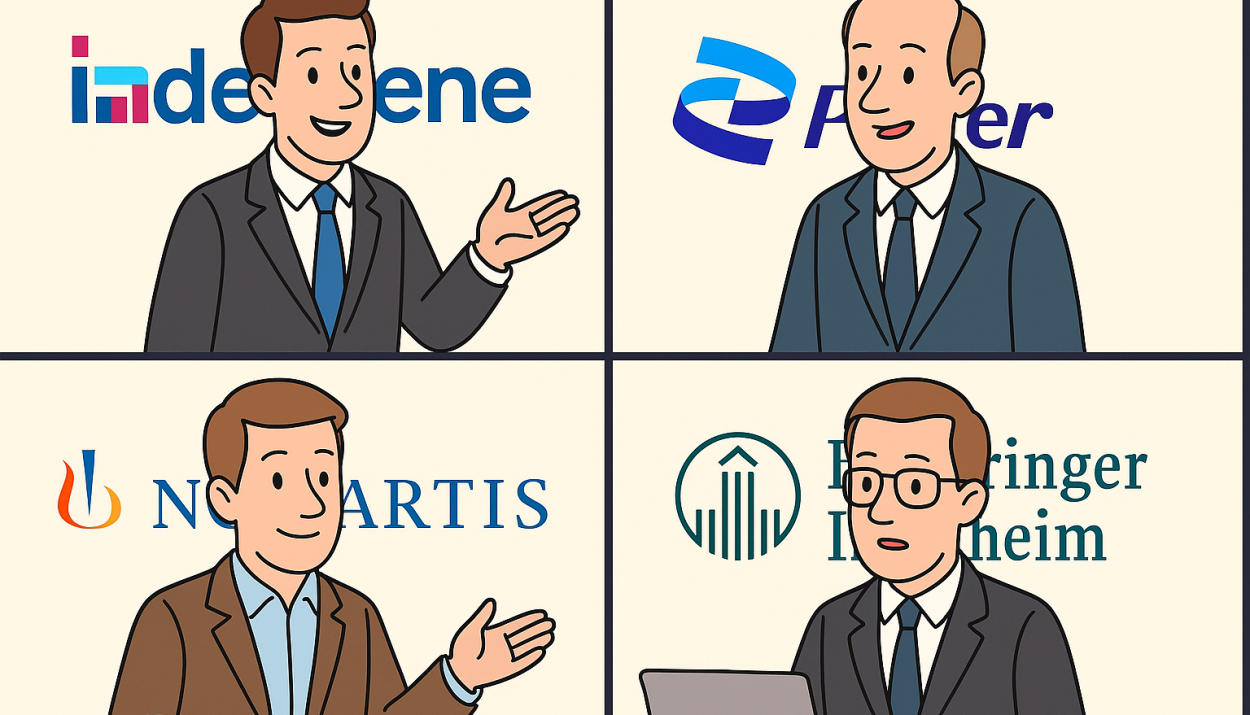At the 2025 Indegene Digital Summit, a high-level panel of regulatory executives from Pfizer, Novartis, and Boehringer Ingelheim gathered to discuss how large pharmaceutical organizations are transforming regulatory affairs to meet the twin demands of strategic foresight and nimble execution. Moderated by Vladimir Penkrat, Associate Vice President of Regulatory Affairs Solutions at Indegene, the session centered on how evolving technology—especially generative AI—and new organizational models are reshaping the regulatory landscape amid increasing product complexity and accelerated approval pathways.
Strategic Versus Nimble: Reframing a False Dichotomy
The panel underscored the importance of distinguishing and integrating two qualities often seen as competing: strategic planning and nimble responsiveness. According to the panel, being strategic involves long-term vision, proactive decision-making, and deep cross-functional collaboration across clinical, commercial, and regulatory functions. At the same time, regulatory agility requires adaptability to evolving data, shifting global regulations, and internal priorities.
Executives emphasized that global drug development strategies now hinge on an ability to navigate both regional regulatory nuances and centralized planning. For instance, Boehringer Ingelheim’s global regulatory head Dr. Thomas Seck noted that being strategic means regulatory teams must go beyond compliance to co-create value with commercial and scientific functions—anchored in an understanding of brand objectives, pipeline goals, and scientific rationale.
Tim Twells, VP of Regulatory Affairs Enabling Functions & Transformation at Novartis, added that nimbleness includes cognitive flexibility: not just fast action, but fast thinking. He argued that regulatory leaders are uniquely positioned to guide end-to-end decision-making throughout a product’s lifecycle.
Hybrid Operating Models: Rebalancing Centralization and Local Expertise
When asked about organizational structure, all panelists agreed there is no one-size-fits-all model for centralizing or decentralizing regulatory functions. Twells observed that the industry has vacillated over time between these models, driven by cost optimization, operational efficiency, and now, digital transformation.
A clear trend is the move toward hybrid models that centralize bulk operations and data-driven processes—enabling automation—while preserving in-country regulatory intelligence and market-specific nuance. For example, local labeling requirements and regional regulatory intelligence remain areas where decentralization is not just valuable but necessary.
Seck cautioned that while centralized models can accelerate capability building in areas like data analytics and AI, they can also hinder agility at the country level. He noted that local teams remain essential for navigating market-specific regulations and ensuring product labels align with local norms and expectations.
Elevating Data Governance and Organizational Role Clarity
Joe McLaughlin, Head of Regulatory Innovation, Excellence, and Data Governance at Pfizer, emphasized that clearly defined roles, decision rights, and data governance frameworks are foundational to enabling distributed decision-making. “You need to know who owns what and who makes what call,” he noted.
The panel also stressed the need to prioritize which datasets are essential for regulatory decision-making. Twells cautioned that not every data point deserves equal scrutiny, advocating instead for structured prioritization to manage growing data complexity and maintain focus on what drives regulatory outcomes.
Embedding AI and Cultural Transformation into Regulatory DNA
One of the session’s most forward-looking discussions focused on the integration of generative AI into regulatory processes. All three companies reported enthusiastic early adoption—especially among “power users” in functions like chemistry, manufacturing, and controls (CMC) and labeling. These trailblazers are now spotlighted internally to create peer momentum.
Still, panelists were clear: technology adoption cannot succeed without cultural change. McLaughlin stressed the importance of building psychological safety into regulatory organizations—rewarding not just successful innovation, but also failed experiments when executed responsibly. At Pfizer, this includes innovation hubs and structured forums where staff can ideate and iterate freely.
Seck described the need to counterbalance regulatory’s historical risk-aversion with a tolerance for experimentation. “We were established to manage risk,” he said, “but today, that has to include the risk of not innovating.” He noted that clarity in roles, culture, and purpose empowers staff to make timely decisions and contribute to strategy rather than defer to hierarchy.
Twells highlighted another emerging challenge: fear of job displacement from AI. He urged industry leaders to reframe the conversation—positioning AI as a tool to elevate strategic thinking rather than replace human roles. “AI allows us to shift from doing to thinking,” he said, adding that organizations must provide scaffolding and governance to support grassroots innovation without losing cohesion.
The New Mandate: End-to-End Regulatory Leadership
Perhaps the most significant shift discussed was the redefinition of regulatory operations itself. Twells noted that his own title—now encompassing “Enabling Functions & Transformation”—reflects a broadening of scope away from traditional operational execution. Regulatory professionals are increasingly expected to drive cross-functional problem-solving, technology integration, and data governance at a strategic level.
This expansion is not just semantic. As regulatory functions become more embedded across the full drug development lifecycle—from clinical development to labeling to real-world evidence—regulatory leaders must break silos and take ownership of downstream and upstream dependencies. This includes ensuring that submission content, labeling strategy, and final product claims remain connected across development, commercialization, and patient-facing platforms.
Looking Ahead: From Compliance to Competitive Differentiation
The panel closed by calling on industry stakeholders to abandon outdated silos and instead embrace a culture of shared accountability, experimentation, and strategic boldness. Regulatory functions, once seen as risk mitigators and documentation stewards, are now central to competitive advantage.
To sustain momentum, companies must institutionalize innovation frameworks, clearly communicate business value for new technologies, and continuously upskill talent to meet the demands of digital regulatory science. As McLaughlin put it, “It’s about changing the DNA of the organization.”
In an era of accelerated pathways, global harmonization pressures, and AI disruption, regulatory affairs is no longer back-office—it’s front and center in shaping the future of drug development.
Moe Alsumidaie is Chief Editor of The Clinical Trial Vanguard. Moe holds decades of experience in the clinical trials industry. Moe also serves as Head of Research at CliniBiz and Chief Data Scientist at Annex Clinical Corporation.









